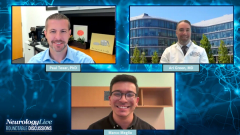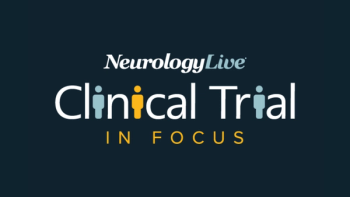
Inside the Pipeline: Emerging Remyelination Therapies in MS
Panelists Ari Green, MD, and Paul Tesar, PhD, explore the scientific rationale and clinical complexity behind promising remyelination agents currently in development for multiple sclerosis.
Episodes in this series

Despite major advancements in the treatment of multiple sclerosis (MS), including the emergence of highly effective disease-modifying therapies that target inflammation and reduce relapse rates, there remains a critical unmet need: the ability to repair damaged myelin. Remyelination—the process by which the central nervous system regenerates myelin sheaths around axons—is a key neuroprotective and potentially restorative goal in MS. While spontaneous remyelination can occur, particularly early in the disease, it is often incomplete and declines over time, contributing to irreversible neurological disability.
In recent years, an influx of research has significantly advanced our understanding of the biology of remyelination, uncovering new molecular targets, cellular mechanisms, and imaging modalities. Yet, despite promising results in preclinical models, there are still no FDA-approved therapies that directly promote remyelination. In this panel discussion, Ari Green, MD, and Paul Tesar, PhD, examine the evolving landscape of remyelination science—highlighting the translational challenges, trial design hurdles, and promising agents in development—while offering insights into the future of regenerative strategies in MS care.
In this episode, the two highlight the diverse therapeutic strategies under investigation to promote remyelination in multiple sclerosis. Green, co-director of the Innovation Program for Repair and Remyelination at UCSF, and Tesar, director of the Institute for Glial Sciences at Case Western University School of Medicine, discuss key molecular targets, including EBP, CYP51, and the muscarinic M1 receptor, while emphasizing how different agents may act on distinct stages of oligodendrocyte regeneration. The conversation also touches on challenges in replicability, industry influence, and the importance of evidence-based claims as the field moves closer to clinical application.
Transcript edited for clarity.
Marco Meglio: Can you guys just discuss any of the major agents or clinical therapies that are currently in the pipeline right now that seem promising to promote remyelination, and what sort of sets them apart—mechanistically or clinically—from each other?
Paul Tesar, PhD: I think there have been many academic and industry studies that have identified therapeutic approaches to enhance the regeneration of oligodendrocytes and promote remyelination. Much of this work has come from drug screening efforts on oligodendrocyte progenitor cells, which we talked about earlier—these have this remarkable capacity to regenerate new oligodendrocytes in the central nervous system, right?
Collectively, these studies have revealed and validated, I think nicely, a handful of druggable targets that both drive oligodendrocyte regeneration as well as remyelination. In my own lab, along with my Case Western Reserve University colleague Ken Bello—and through a therapeutics company I co-founded with Ger Adams—we’ve focused our efforts on two enzymatic targets in the cholesterol biosynthesis pathway: namely, EBP and CYP51. When inhibited, these drive the accumulation of a bioactive sterol that promotes the generation and survival of new oligodendrocytes and remyelination.
If you analyze all the screening data that’s been published by many labs and companies, it’s clear that many molecules targeting EBP have been identified as a very prevalent class of hits—maybe the most prevalent class. Now, there are other exciting potential targets that have been identified and are being pursued. Ari will certainly talk about the muscarinic M1 receptor. Others include GPR17, the thyroid hormone receptor, some of the receptor types, and kinases. These have been identified and are being pursued by a number of academic and industry efforts.
But I think what's important to remember is that the regeneration of oligodendrocytes and remyelination is a multi-step developmental process. This is not simply a matter of one cell dividing into two, and now you’ve replaced a cell. The remyelinating drugs that have been identified and are in development across multiple programs are each likely targeting slightly distinct stages or aspects of this regeneration or disease process. Some are stimulating OPC differentiation. Others are promoting the maturation of immature oligodendrocytes. Some are enhancing the survival of newly formed oligodendrocytes—which I think is a key bottleneck in vivo to ultimately generating enhanced remyelination.
And I think others are overcoming local, disease-specific barriers in the lesions and other places that are preventing regeneration—so-called “approaches to remove the brakes.” I’ll just say in closing here that this mechanistic diversity among the current therapies is really important. We don’t know which ones are going to work, ultimately. I think each of them may work on different stages of the regeneration process, and they may ultimately complement each other rather than compete.
It’s possible that at different stages of the disease—or depending on individual patient biology—there may be different responsiveness to each of these distinct remyelinating therapies. Based on underlying disease stage, biology, or genetic factors, some approaches might prove more amenable for certain patients.
Ari Green, MD: Yeah, I would only echo that. I think there’s a lot of different stuff that is exciting. As Paul touched on, we’ve been excited by targeting the M1 receptor and antagonizing the M1 receptor as a means of inducing OPC differentiation into oligodendrocytes.
I think some of the approaches that have been taken are much more robustly demonstrated and have been replicated in multiple laboratories. So I’d encourage people to look at which approaches are replicable and have shown capacity in a lot of different contexts and settings for remyelination to occur.
I’m hopeful that a few different approaches will be successful. I do think people have to be cautious. There are claims made about some approaches—nutritional, elemental therapies—being remyelinating, with very little biological evidence to support that. I think it’s super important for the field. None of us wants to denigrate anybody’s work, but we have to be, in the interest of patients, very clear about the limited amount of data that supports remyelination claims for some of these therapies. People have to be cautious and wise about interpreting that.
We also have to be cautious based on our own experience. We chose to pursue the M1 approach. We partnered with some folks in industry. The challenge is that the folks in industry have a different set of priorities from those of us doing scientific research and who are involved in clinical care.
Their obligation is to their investors—not necessarily to the development of drugs that are successful therapeutically with the ultimate aim of helping patients with MS. So I think we have to be both wise in judging the science, and also wise—and learn—about how we can advance the field without necessarily handing over the keys to people whose interests don’t align with those of us who really care about MS.
Newsletter
Keep your finger on the pulse of neurology—subscribe to NeurologyLive for expert interviews, new data, and breakthrough treatment updates.





































